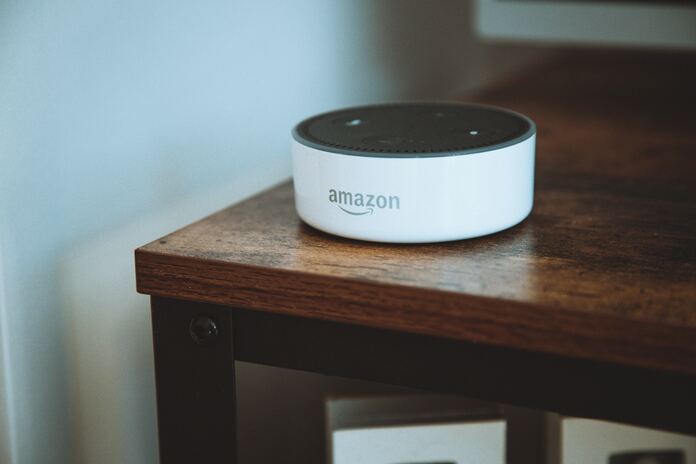Amazon Stock (NASDAQ:AMZN)
The largest online retailer in the world is Amazon (NASDAQ:AMZN). The previous ten years of the company’s supremacy have been affected by a variety of headwinds caused by a variety of macroeconomic issues. Nevertheless, when I observe a few metrics that seem to be improving for Amazon, it now appears as though the tide is turning. Exchange rates are one issue (which had an influence on overseas revenue), and free cash flow, which bottomed out in Q1 2022 but has since been increasing, is another. I’m going to outline the reasons why Amazon stock might be the “Ultimate Comeback” stock for late 2023 and early 2024 in this piece. Let’s start now.
Will Amazon Make a Comeback?
Starting with revenue, Amazon reported $149.2 billion in revenue, an increase of only 8.58% from the previous year. Compared to the third quarter of 2022’s stated 14.6% YoY growth rate, this was a significantly decreased growth rate. Foreign exchange rate headwinds were the main source of this “slowdown,” which resulted in an 8% year-over-year decline in overseas revenue to $34.5 billion. If we zoom out, the USD to EUR exchange rate declined throughout Q4 ’22 and into Q1 ’23 after reaching a top of €1.03 to $1 in late September 2022. Due to the gradual nature of the decline, Amazon would have only partially seen a positive impact on its international revenue. Whilst the starting point is lower in Q1 of 23, this should be advantageous for the impact of foreign exchange. Of course, geopolitical developments like the end of the Ukraine conflict could boost the euro further, which would be good news for foreign exchange rates. Although many of the surrounding nations use the euro, Ukraine utilizes the hryvnia as its principal currency, which led to panic selling as the conflict broke out. It was encouraging that the Ukrainian military was able to drive Russian forces out of several seized territories in the fourth quarter of 2022. According to an old proverb, “what can’t go on forever must finish sometime.”
Amazon announced total revenue growth of about 12% year over year in Q4 ’22 on a constant currency basis. Even yet, this was 2.7% weaker than the growth rate that was stated for Q3 of 22. Naturally, the “recessionary” environment—which includes psychological factors as well as inflation and interest rates—is what is most responsible for this. Consumers may have therefore reduced their spending as a result, though this would undoubtedly be substantially offset by the surge in e-commerce sales that occurred during the holiday shopping season in Q4 ’22. For instance, Amazon was listed as the top retail company in the United States during the “Cyber 5” period between Thanksgiving and Cyber Monday, garnering 34% of consumer wallet spending on general products. This indicates that Amazon’s market position is still unchallenged as it was consistent at 34% in 2021. The fact that inflation is on the decline is encouraging for the future of e-commerce, which picked up speed in 2022.
Analyzing payment processor data makes sense from an economic standpoint, in my opinion, as it essentially provides a bird’s-eye view of the flow of payments. In this instance, I recently examined a conversation between Stripe’s creator Patrick Collison and VC company Greylock (one of the most popular payment processors in the world). Collison said that the majority of people think “Europe’s economy is horrible right now,” to paraphrase. His company’s research, however, demonstrates that this is untrue and that consumer spending is still robust. This is more of a general point, but Amazon just (in 2023) increased the scope of their collaboration with Stripe, which will now handle “a large share of Amazon’s overall payments flow.” Collison’s statements, therefore, provide a wealth of information about the current state of consumer spending. Additionally, this makes sense given that, according to Citadel data, American households have almost $1 trillion in savings. Then, when we put this together with the prediction that the U.S. e-commerce market will expand at a CAGR of 11.51%, we can see that Amazon is in a good position.
With $21.4 billion in reported revenue as of Q4 of 2018, Amazon Web Services [AWS] is the market leader in the cloud. As you can see from the chart I made below, this metric towers the third largest company in the sector, Google Cloud, which generated “only” $7.3 billion in Q4 ’22.
Although slower than the 28% recorded in Q3 ’22, the AWS revenue growth rate in Q4 ’22 was still strong overall. However, it should be highlighted that Amazon uses a “consumption-based” business model that adapts quickly to both high and low demand. Less demand and hence slower revenue growth is anticipated during a macroeconomic slump. But, providing this flexibility is a key component of Amazon’s value proposition, and the corporation even actively assists businesses in doing so. For instance, Amazon employs specialized analysts to assist in reducing expenses for their business clients. Although it may seem odd, this makes perfect sense. Amazon will assist them in making savings instead of switching to a rival, and in return, both parties will gain from a continued partnership. The “scaled economics shared” philosophy of Amazon, which returns cost savings to the customer, includes this. Given that the cloud computing sector is anticipated to grow quickly—at a CAGR of 19.9%—through 2029, I predict Amazon will profit from this development.
Problems and Trends in Earnings
In terms of profitability, Amazon has had a difficult time over the previous few years. The company’s operating income for the fourth quarter of 22 was only $2.737 billion, a 20.9% decrease from the previous quarter. The good news is that this was an 8% increase from the $2.5 billion reported in Q3 of 22. Thus, this can be a sign that the company is approaching a turning point. In Q4 of 22, Amazon reported an increase in operational costs of 9.34% to $146 billion. Yet, one-time costs like the $640 million in severance pay for the 18,000 layoffs were a major contributor to this. Amazon CEO Andy Jassy recently (March 20th, 2023) announced a further 9,000 layoffs as part of a restructuring. If I calculate the equal severance, it comes to $320 million, which will have an effect on Amazon’s earnings in the first quarter of 23. Yet as we head into the second half of 2023, Amazon should profit from more efficient personnel and structure. Nevertheless, it is sensible to maintain perspective regarding the job cuts; 27,000 people may seem like a lot, and I am sympathetic to all those impacted. But Amazon launched a massive hiring drive that saw its employees double, from 798,000 in Q4 2019 to 1.6 million in Q4 21. In retrospect, it was obvious that this was a mistake, but at the time, it made sense because Amazon had profited from the lockout as brick-and-mortar retail outlets disappeared. The golden times would have most likely continued if rising inflation hadn’t started to appear (which prompted the Fed to boost rates).
Regarding cash flow trends, Amazon’s free cash flow appeared to have peaked in Q1 of 22 at a negative $15.48 billion. Since then, the losses have decreased significantly, and the business has recorded a startling rebound with a positive free cash flow of $20.7 billion in Q4 of 22 on a levered basis.
By the end of 2020, capital spending had increased by an astounding 176%, from $12.689 billion in 2019. Then, in 2021, this climbed by an additional 58% to reach $55.4 billion. This makes sense given that Amazon was investing heavily to increase the footprint of its fulfillment centers and AWS infrastructure. As a result, these investments are not technically “wasted,” and Amazon will gain in the long run. Moreover, capital expenditure has begun to stabilize, with a 4.7% increase in 2022. As CFO Brian Olsavsky indicated during the Q4 earnings call, the company has “tightened up” its CapEx and will do so, even more, going forward, therefore I anticipate Amazon’s CapEx to start to drop going forward.
Value-Based Model
Amazon’s financial information has been integrated into my discounted cash flow model and updated with estimates. For “next year,” meaning the upcoming four quarters, I have increased my previous projections by 1%, to an 8% increase in revenue growth. This is based on an extrapolation of management projections for the first quarter of 22. I predicted a faster growth rate of 15% per year for years two through five. Although long-term economic conditions are anticipated to improve, along with foreign exchange rates, I have based this on the percentage of holiday spending statistics previously mentioned and a projected resurgence in e-commerce. I also think the cloud segment’s [AWS] growth will decelerate in 2023 as consumer demand declines before a significant uptick in years two through five.
I have increased my operating margin prediction from 3% to 7% for 2023, or “next year.” The (2.4%) margin produced in Q4 of 22 was used to calculate the 3% figure. But, I predict that the number will now be closer to the 7% margin figure, which is consistent with the margin for the entire year 2022. This assumes a decrease in “one-off” expenditures for severance and fulfillment center charges, which I anticipate will start to decline in the second part of the year as Amazon completes its restructuring. I’ve predicted a 14% operating margin over the following ten years. This is overly optimistic but is supported by Amazon’s high-margin advertising business and the high-margin AWS division. Despite the cyclical drop in the advertising business, Amazon was nevertheless able to grow its advertising revenue by 20.8% over the previous year. I predict that this rise will quicken once the advertising industry recovers. Remember that the operating margin figures also account for R&D costs that I capitalized.
I calculate a fair value of $24 per share based on these variables. The stock is 52% undervalued as of this writing, trading at around $98 per share.
Amazon trades at a future price-to-sales ratio of 1.80, which is 44% less expensive than the average over the last five years. The chart below shows that this is also less expensive than other e-commerce stocks in the sector.
The largest threat to Amazon is a protracted period of recession and/or inflation, which will probably keep e-commerce demand low and fulfillment cost inputs high. The U.S. will have a recession, according to several observers, in late 2023. I think Amazon continues to dominate the market in terms of competition, but there is a new e-commerce player in town that has been expanding quickly. Temu is the firm, and it is a member of the Chinese e-commerce powerhouse PinDuoDuo or PDD holdings (PDD). Although it is currently a small portion of Amazon’s size, this company’s quick expansion and affordable prices—in some circumstances, even lower than Amazon’s—could make it a contender in the future. We might be dealing with a disruptor, thus I recently explored Temu in depth in my PDD essay, which I highly recommend you read.
Final Reflections
The previous few years have seen significant growth investment by Amazon, a fantastic firm. I think that the economy and exchange rates are mostly to blame for the business’s sales slowdown, which is not a long-term problem for the organization. I did bring up Temu, a Chinese rival that is expanding quickly, but Temu lacks Amazon’s extensive fulfillment network, which I consider to be a significant competitive advantage. The fact that Amazon’s cash flow has improved significantly is encouraging, and given that my valuation model and forecasts imply the stock is intrinsically undervalued at the time of writing, I will consider Amazon stock to be a fantastic long-term investment.
Featured Image: Unsplash @ Nicolas J Leclercq
















